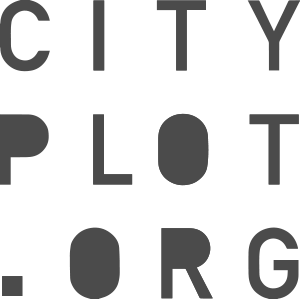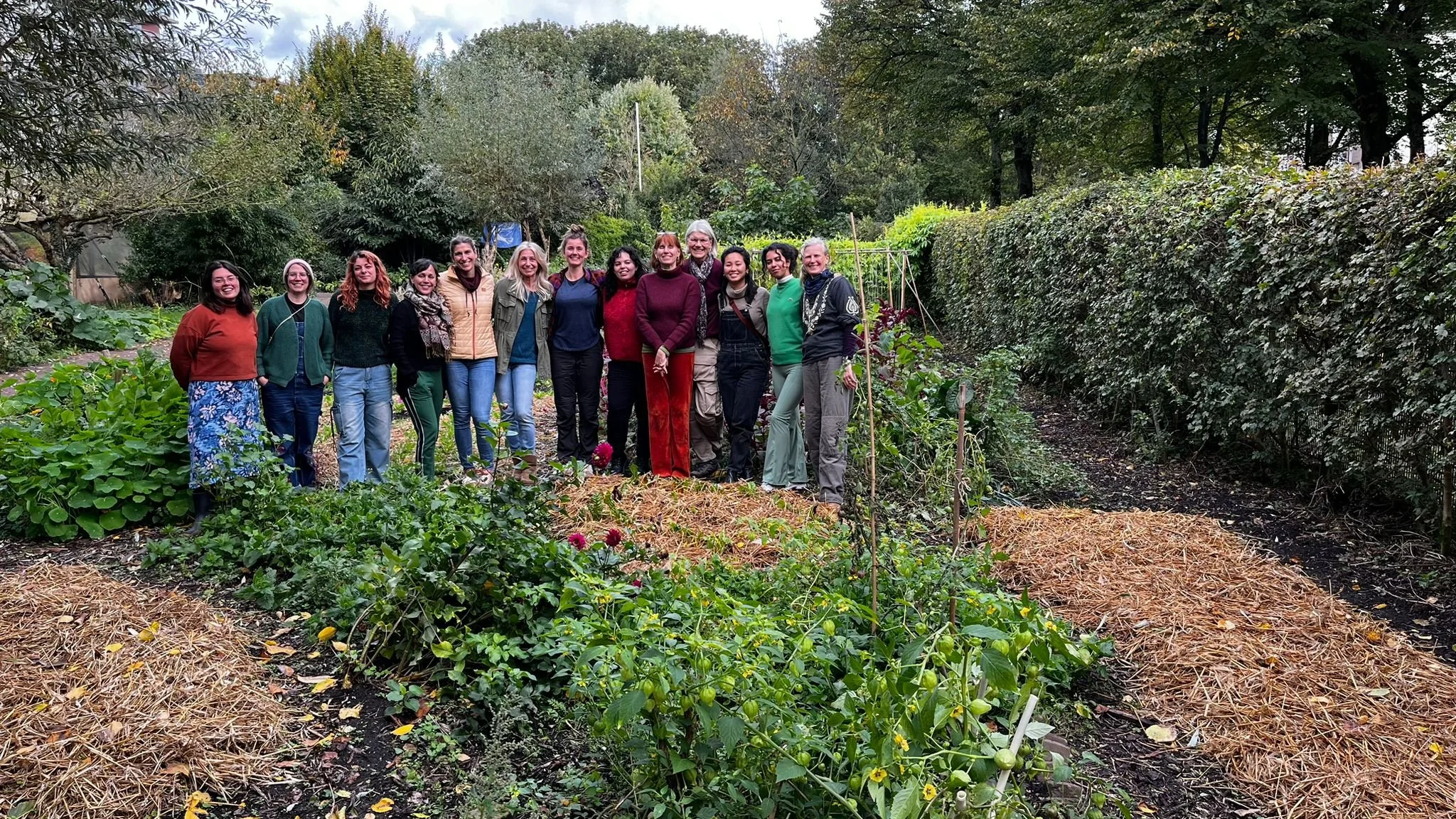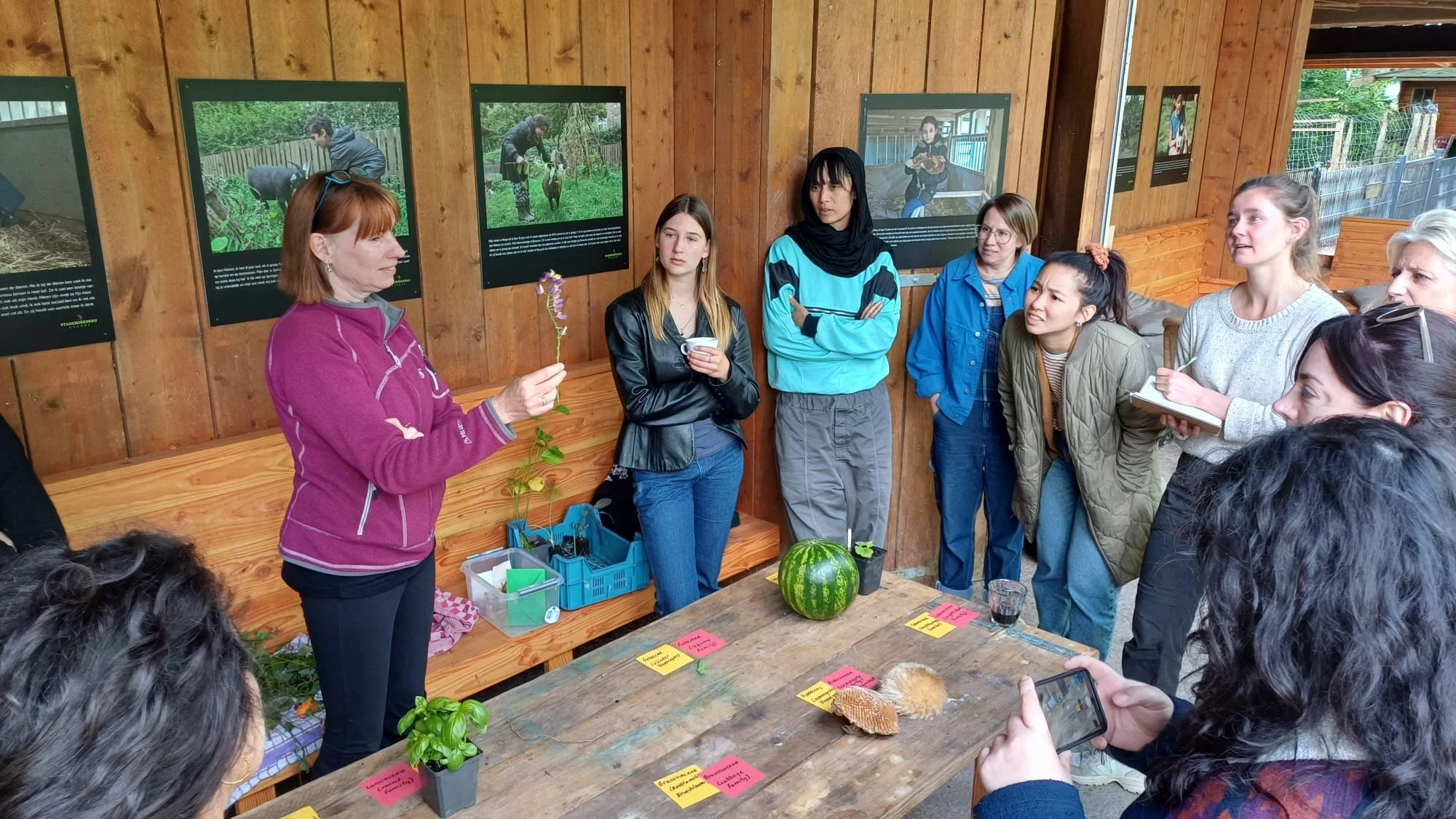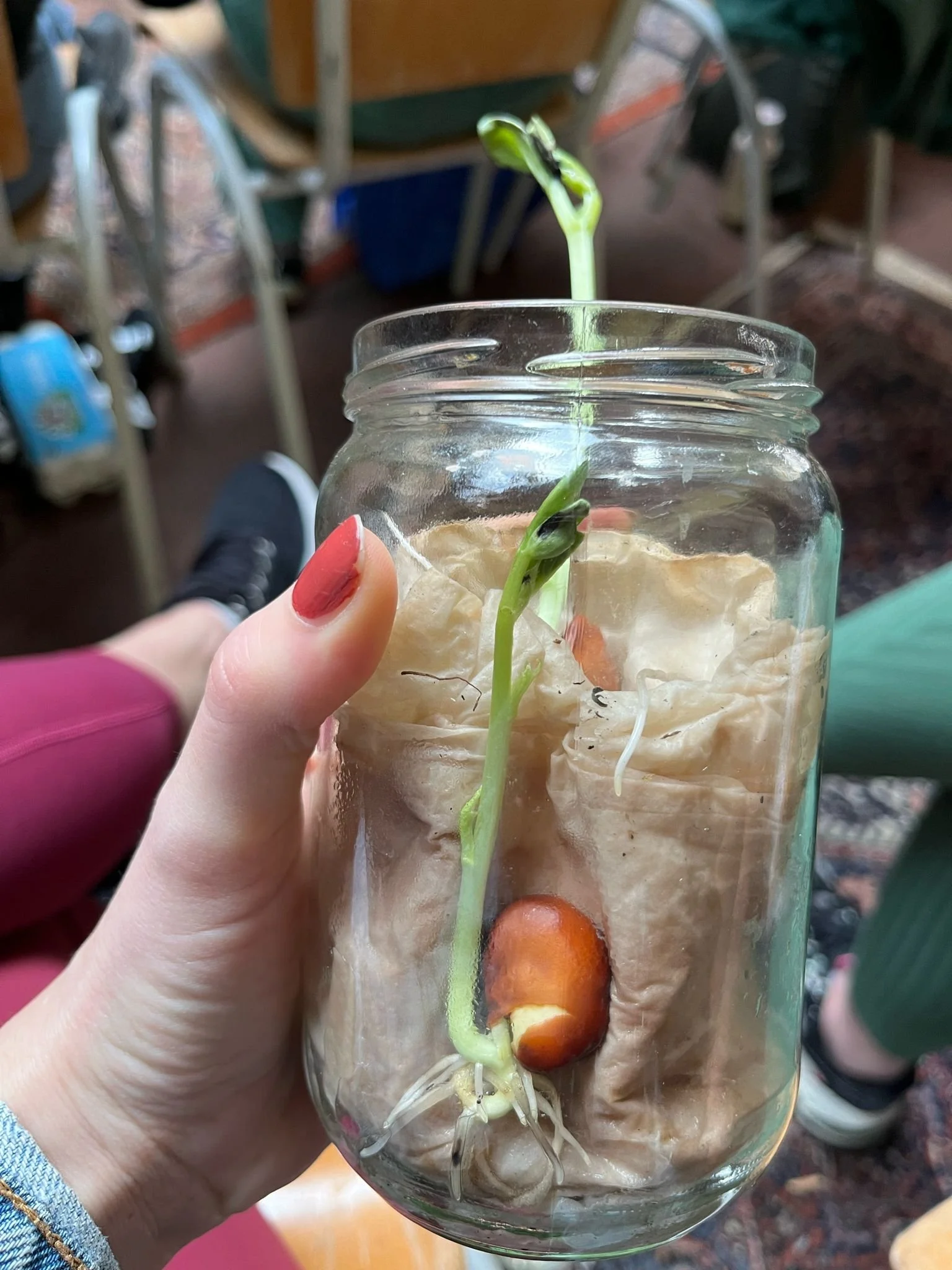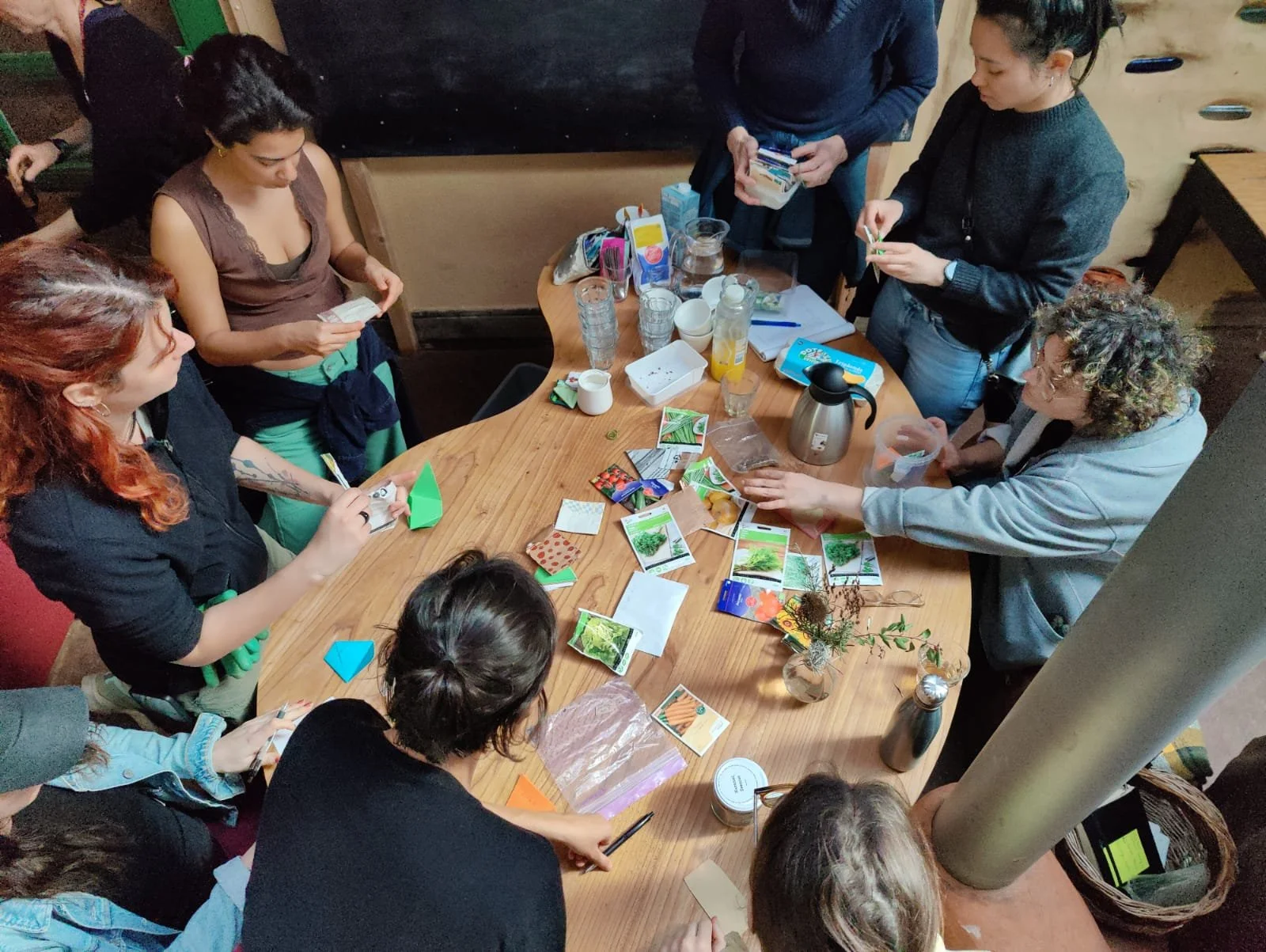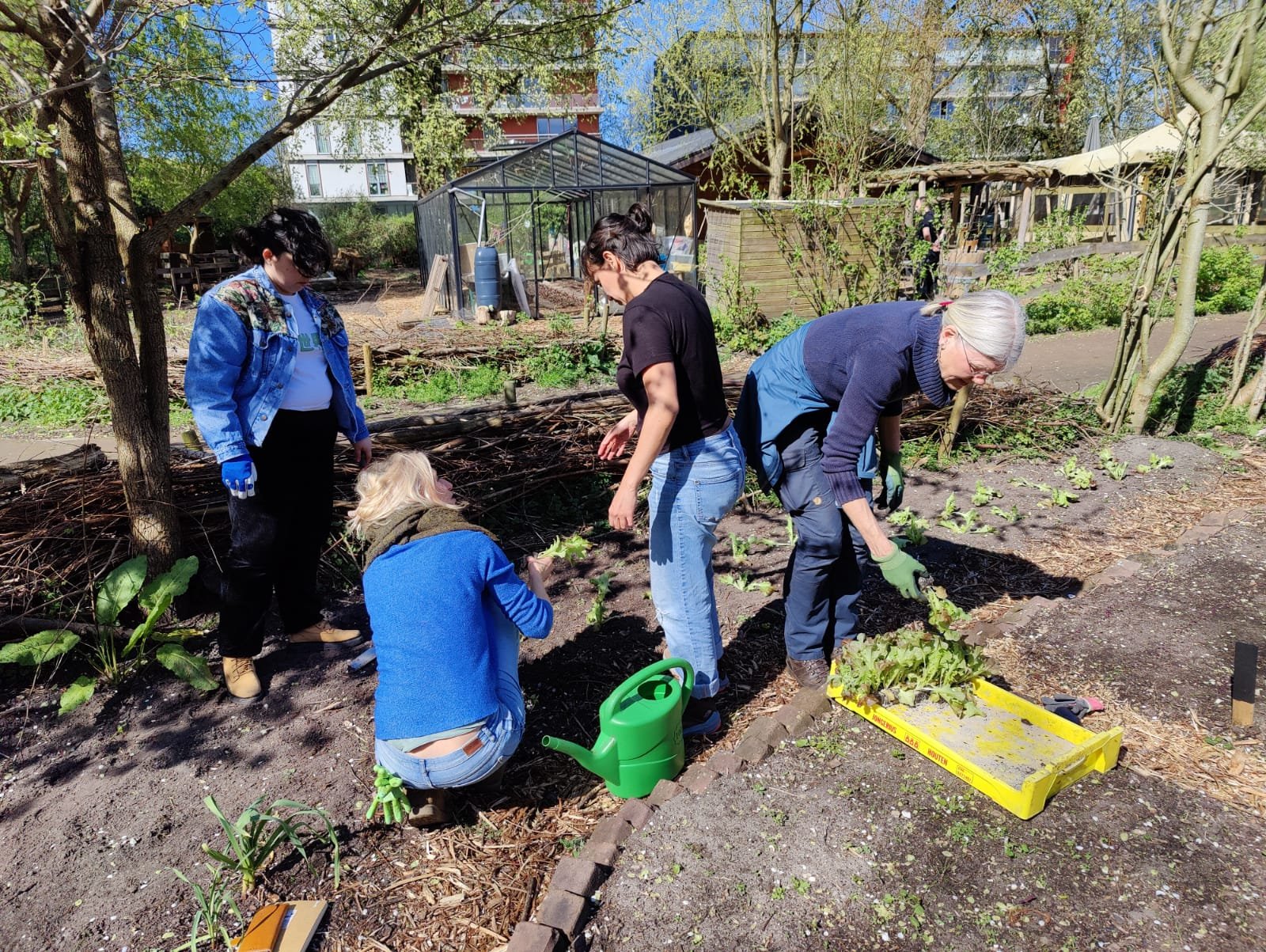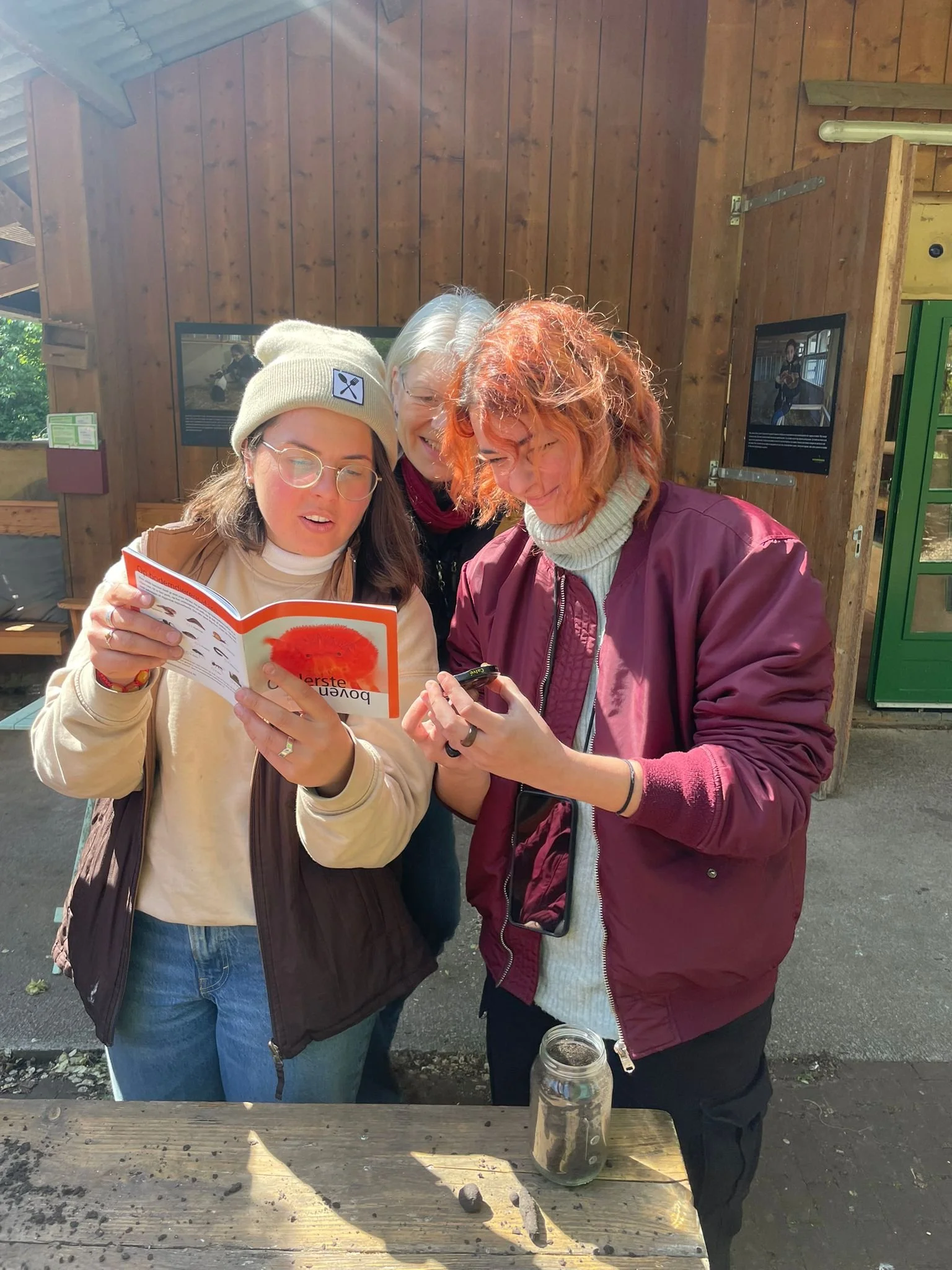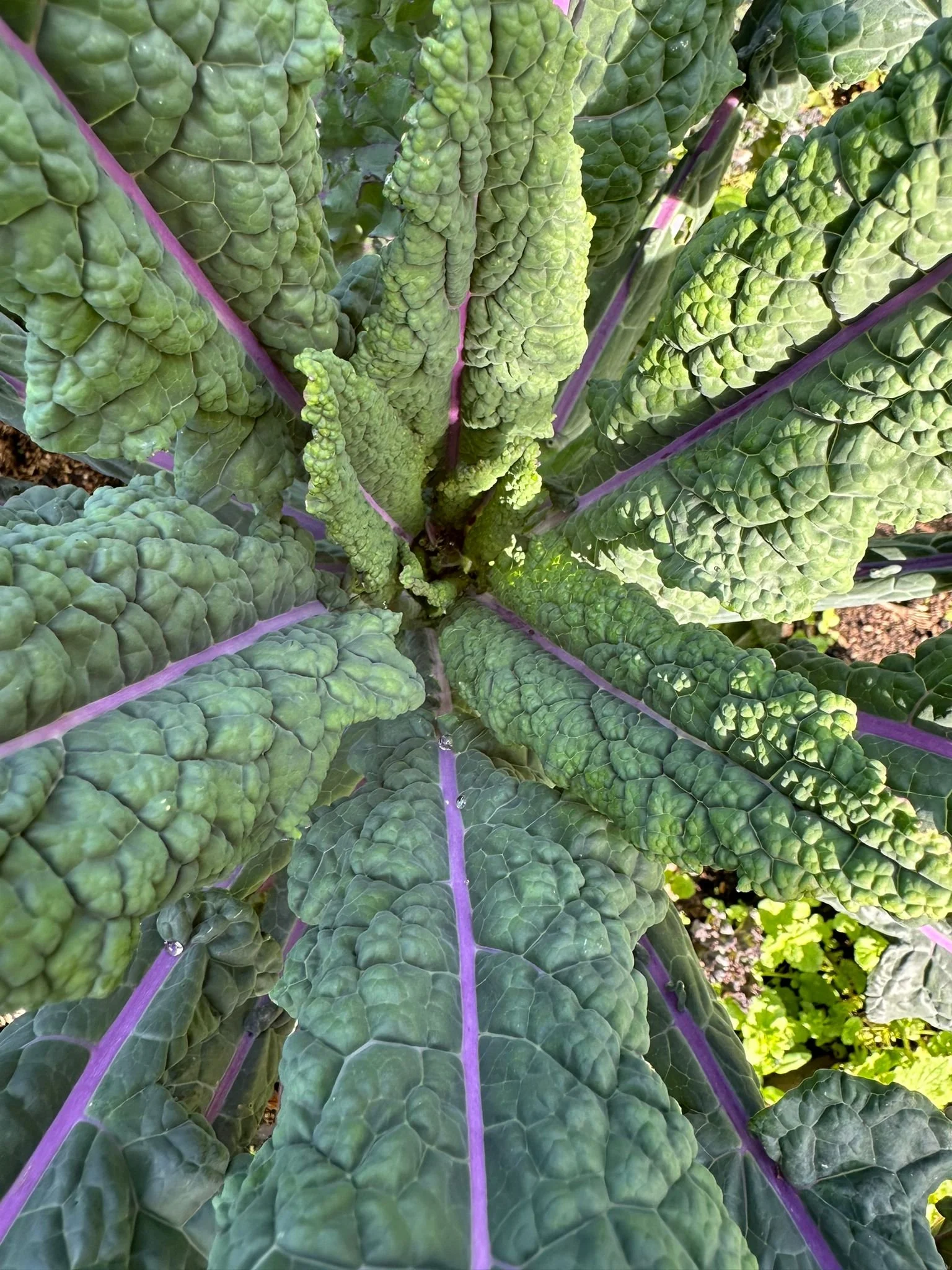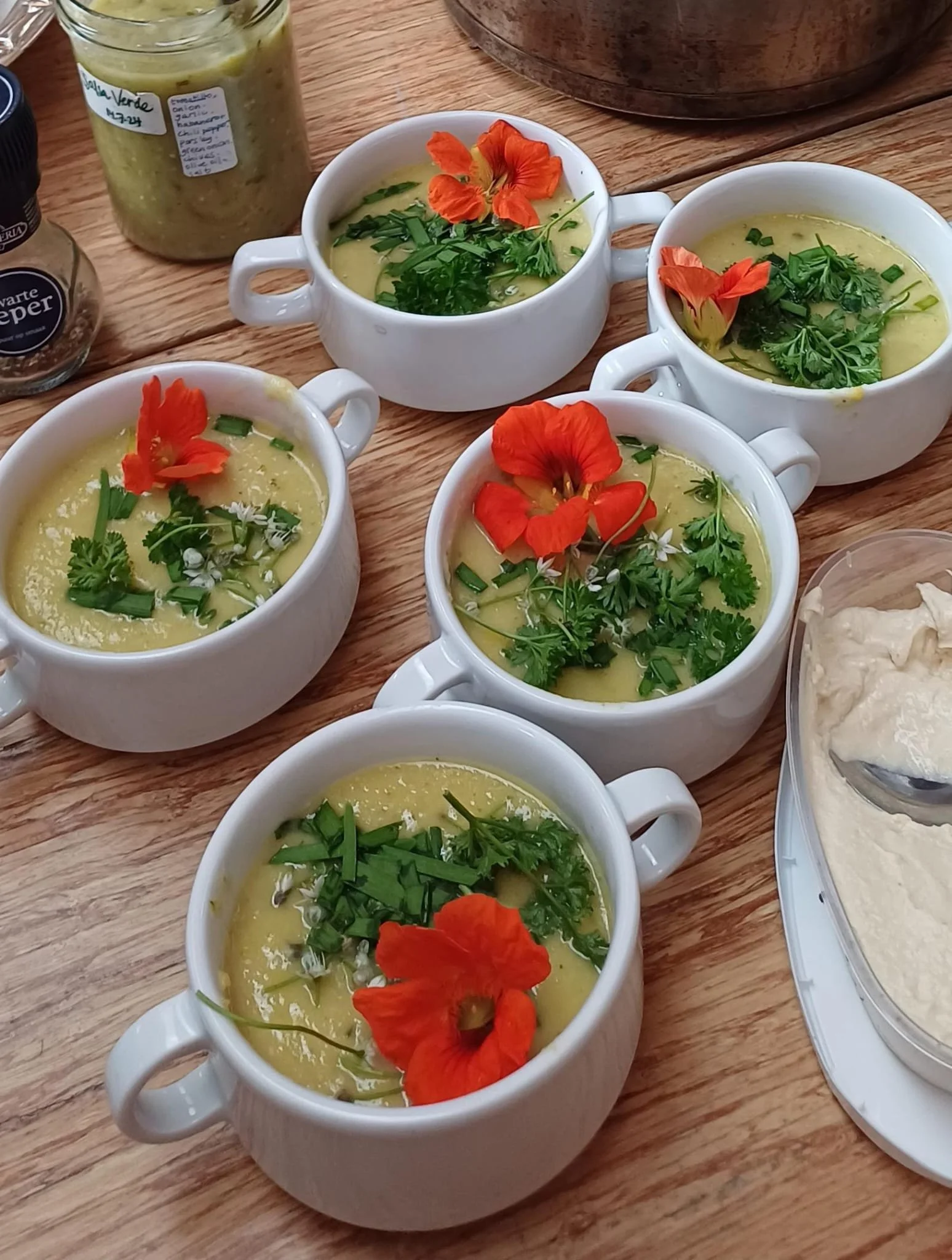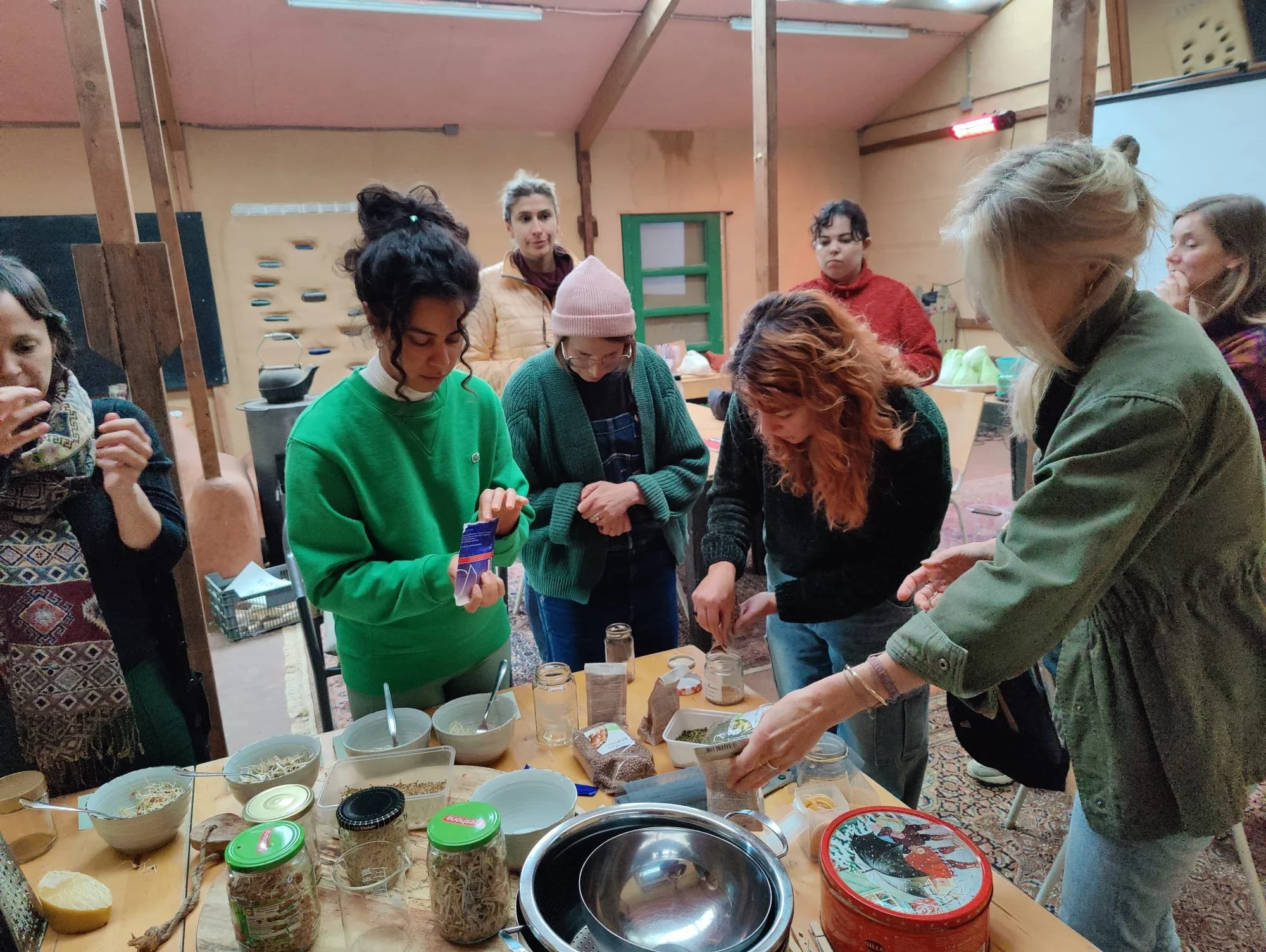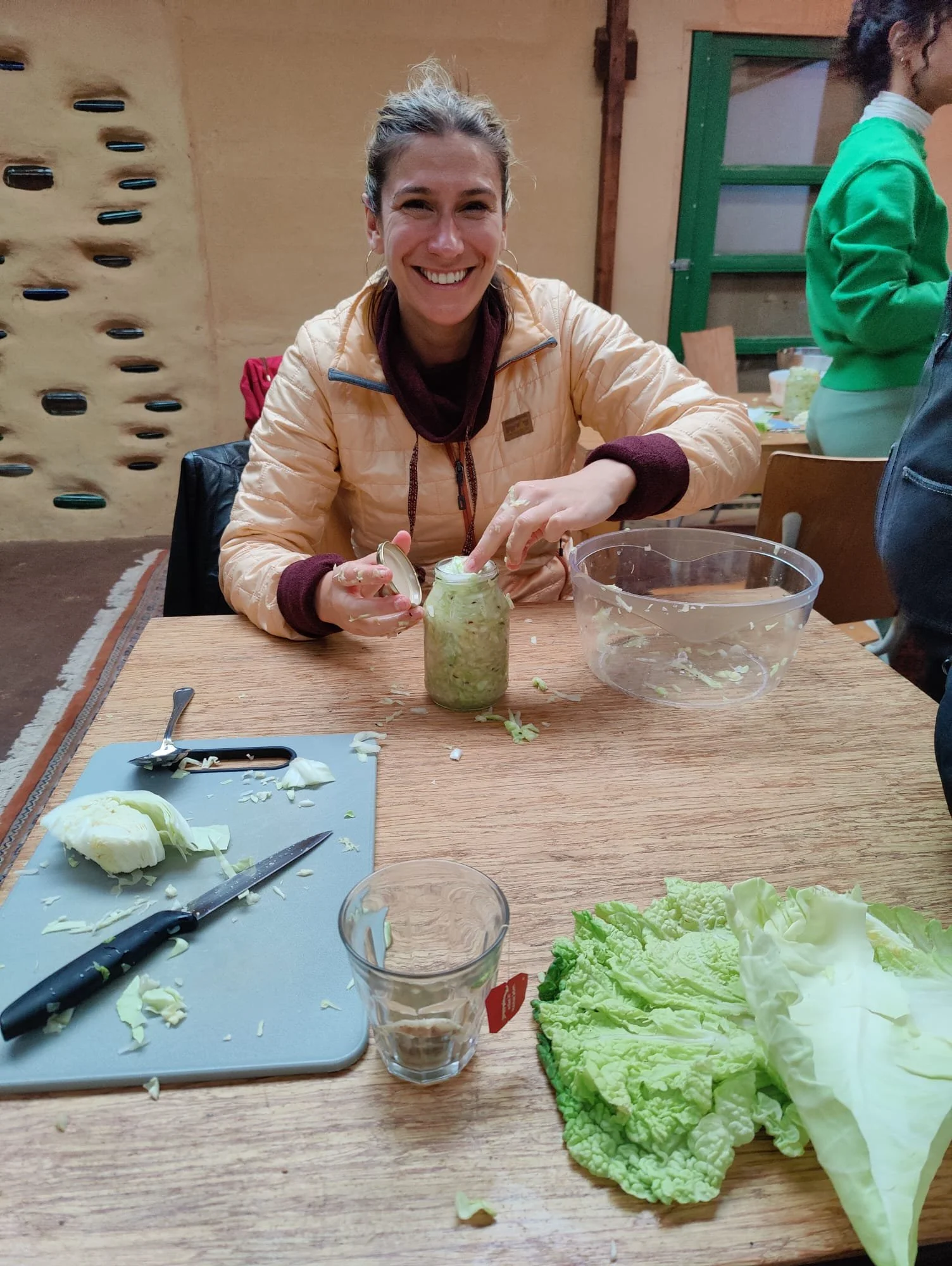Digging deeper -1
GET DOWN, GET DIRTY, GROW YOUR OWN FOOD
Why following this series will make you dirtier, wiser, cooler and sexier in just one growing season!
The 2024 group of get down get dirty participants and teachers at the Stadboererij Osdorp community garden
Getting down
There are so many levels and hidden meanings in the name of this course that Cityplot has been offering for 14 years. First of all, “get down”: this refers to getting down on your hands and knees or your butt to get closer to the soil, the seedlings, and the weeds. But it can also be read as “to gain knowledge about” or “to get hip to” and we promise to provide you with all you ever wanted to know about edible gardening.
Getting dirty
As far as the “getting dirty” part, our intention was to warn course participants that part of each session is taught outside in the garden, rain or shine. But it also has various other connotations including getting to work, or getting sexy. We do all of the above in this course, the latter particularly in the class about flower sex and pollination!
Growing your own food
The part of the name about “growing your own food” refers to the core of the course. Over the years, we have taught hundreds of city dwellers how to do just this – no matter how tiny or challenging the location. Shady balcony? No problem, we will coach you in growing an abundant salad bar or a personal mint plantation to supply your mint tea and mojito cravings. Big weedy “volkstuin” plot? We’ll teach you step-by-step how to turn a brambly, overgrown area into lush, fertile soil in just a few months. There is something for you, whether you’ve never put a seed into the ground or whether you’ve been growing food and composting for many years.
As one of the teachers of Get Down, Get Dirty for more than a decade, I wanted to list some of my highlights through the years.
The class is fully grounded, meaning that a garden is always part of the classroom. For many students, this is the most exciting part of each session. Seeing edible plants live and up close can be quite mind blowing. “Wait a second, does kohlrabi actually grow above the ground on a little stick?!” and “Whoa, those radishes doubled in size over the past week!”
Eating together at the lunch break halfway through the monthly sessions is always a special treat. We provide something from the garden – wild garlic pesto and salad greens, or zucchini soup with freshly-roasted pumpkin seeds for example. Other students are welcome to bring their own contributions, and as the students come from all over the world we have been introduced to local specialties that have expanded our culinary horizons.
Our app group for teachers and participants continues to be busy long after the course has ended. Some participants continue to come volunteer in our gardens as a way to stay connected, others have gone on to take other courses together, some have joined the Cityplot collective and are teaching courses of their own, and many more have gone on to work in urban, green and food-related initiatives.
by Ann Doherty, City coordinator and GDGD teacher
Sarah
This course was the best mix of informative and fun. Ann, Eva and Noami are experts, and really know all the practical tips for making plants thrive. Each session was balanced with a bit of useful theory and working with our hands. I loved following the season from learning how to care for baby seedlings all the way to conserving our harvest in nice recipes for the winter. I came in wanting to learn to garden and left with so much knowledge and an amazing community too!
ELIZABETH
Last year, I took part in Cityplot’s Get Down Get Dirty—and I loved it! 🌱 I learned so much about sustainable living and systems thinking, which inspired me to make changes around me, like in my small garden. The biggest lesson I learned is that even in a north-facing garden in the cold Netherlands, you can still grow something.
